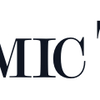Business News

The Economic Times: Breaking news, views, reviews, cricket from across India
Updated: 10 hours 31 min ago
Scindia asks BSNL for FY26 circle-wise plan
Union Telecom Minister Jyotiraditya Scindia has asked state-owned BSNL to submit circle-level customer growth and business plan for the current fiscal, an official statement said on Tuesday. The minister met 27 Chief General Managers (CGM) and Senior Officials of BSNL and directed them to meet every month. "Minister Scindia has directed the team to meet every month and discuss best practices and challenges. He also asked the team to co-create solutions to the challenges of different regions. Minister Scindia has asked every circle to make a Customer growth plan and a Business Plan for FY 2025-26," the statement said. The minister lauded the BSNL team for making the PSU profitable after a gap of about 18 years. The company had reported a net profit of Rs 262 crore in the October-December 2024 quarter. He asked the entire team to continue this momentum and focus on customer acquisition and retention for long-term success. BSNL in the last 8-9 months has added around 55 lakh new customers. Scindia also asked CGMs to work towards capacity building of their juniors and infuse passion in them to get them on the same wavelength.
Categories: Business News

